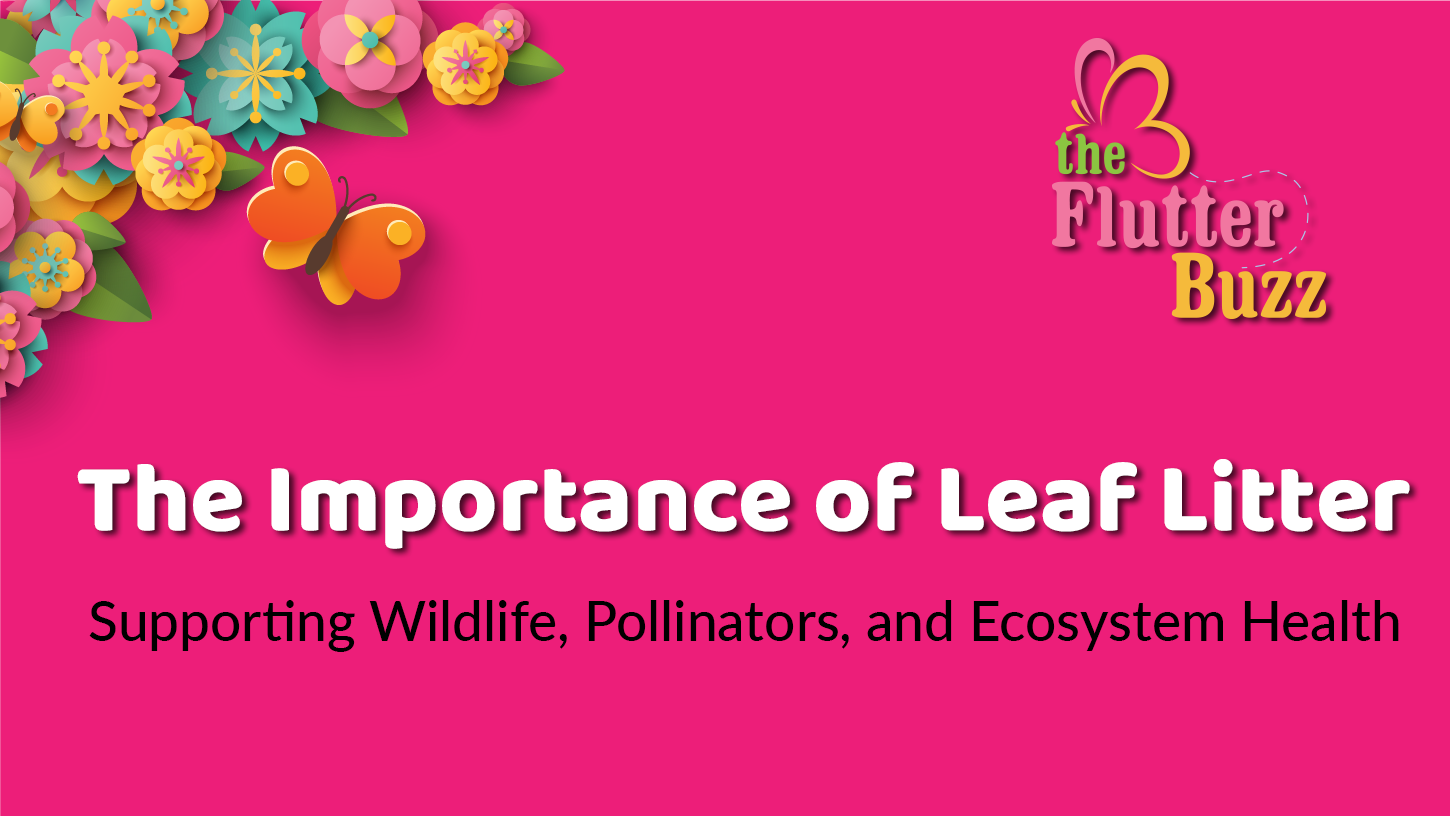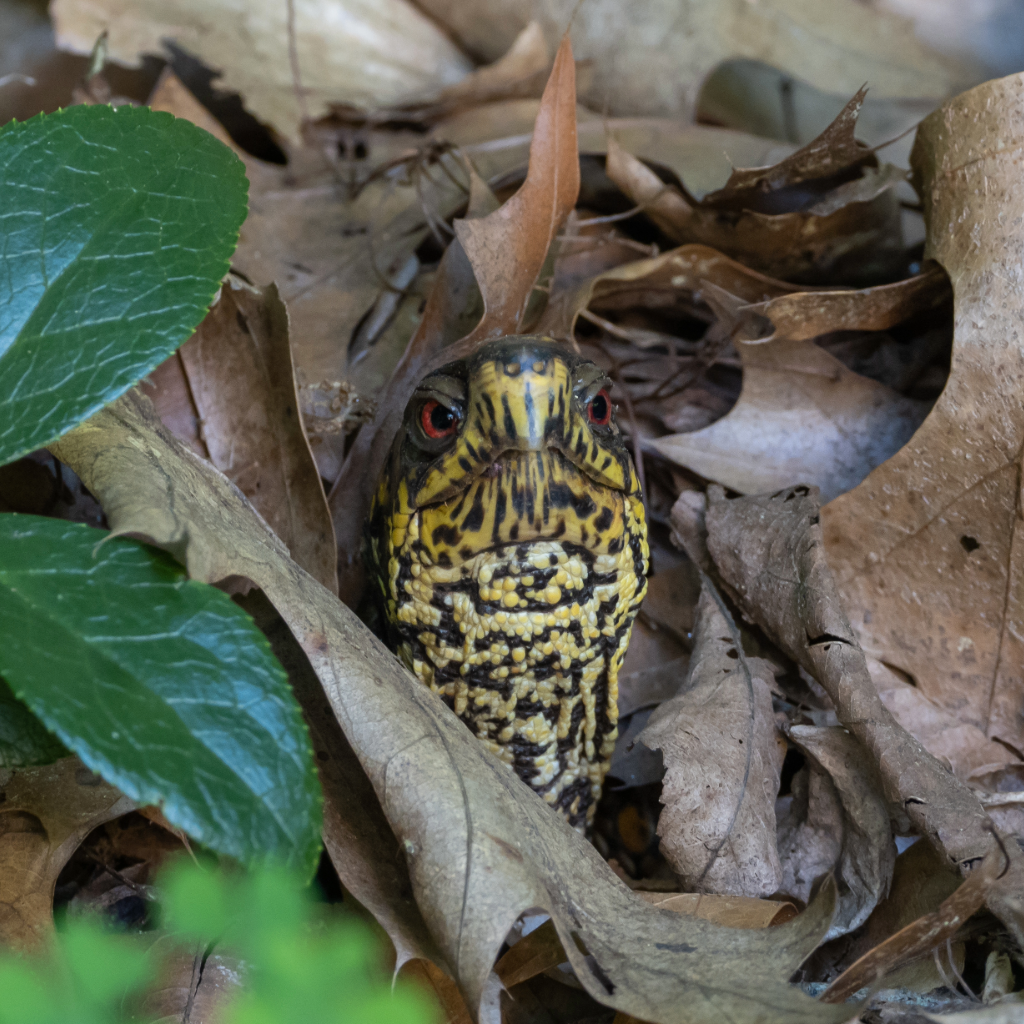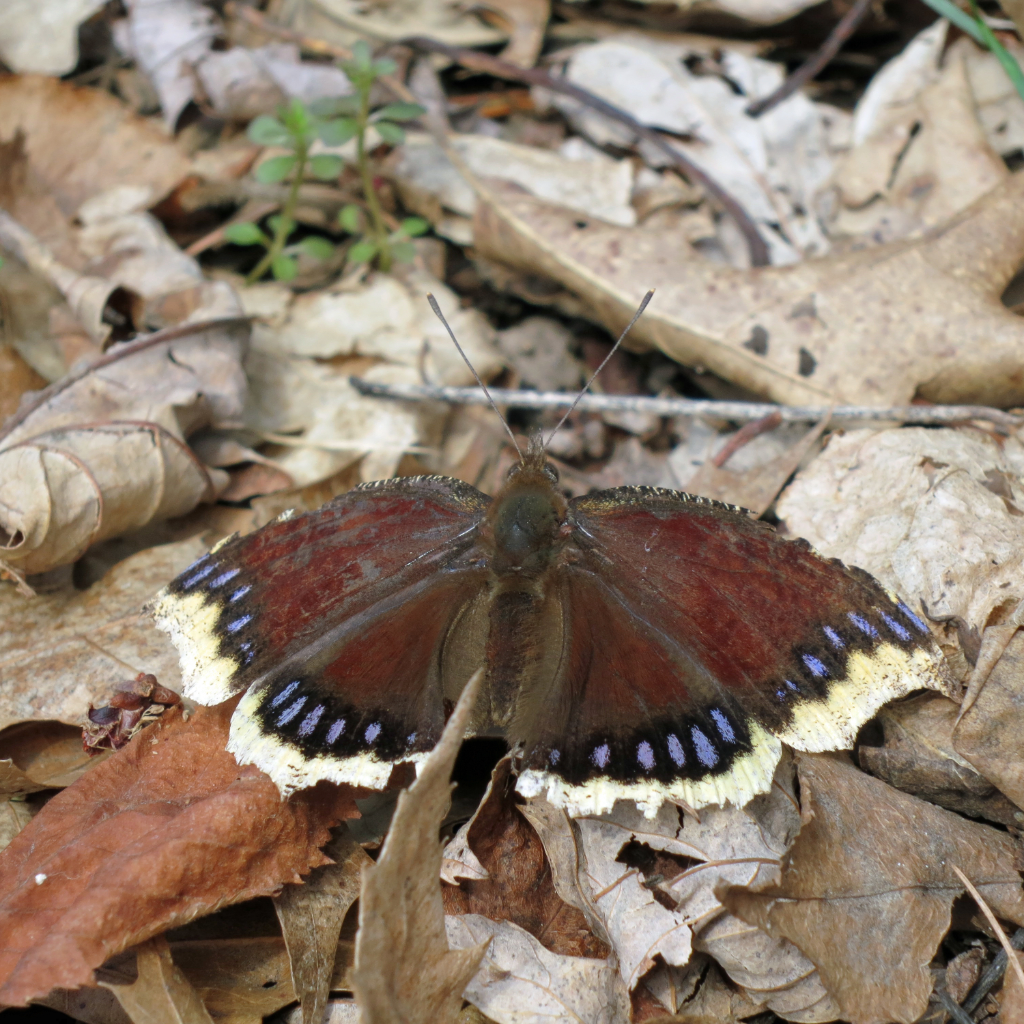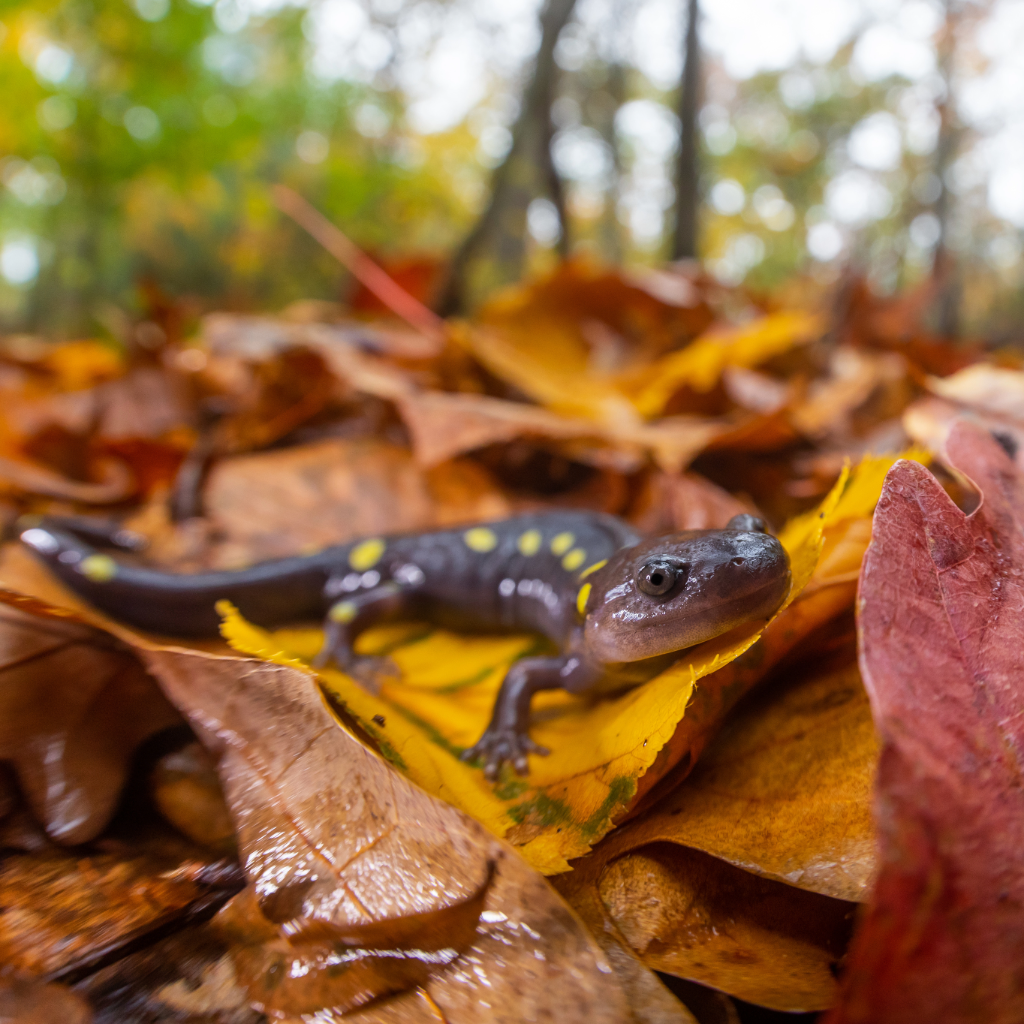
01 Jan The Importance of Leaf Litter: Supporting Wildlife, Pollinators, and Ecosystem Health
As autumn turns leaves into a colorful carpet on the ground, many gardeners and homeowners are quick to rake and remove the debris. However, leaving leaf litter in place can significantly benefit wildlife, pollinators, and the ecosystem. This natural layer of organic material plays a vital role in supporting biodiversity and maintaining ecological balance.



What Is Leaf Litter?
Leaf litter refers to the fallen leaves, twigs, bark, and other organic materials that accumulate on the ground. Over time, this layer decomposes, enriching the soil with nutrients and creating a thriving microhabitat for countless organisms.
Benefits of Leaf Litter
Habitat for Wildlife
Leaf litter provides critical shelter for a wide variety of creatures, including:
- Insects: Many beneficial insects, such as beetles, ants, and spiders, live and breed in leaf litter. These insects form the base of the food chain, supporting birds, amphibians, and small mammals.
- Amphibians and Reptiles: Frogs, toads, salamanders, and lizards rely on the moist environment of leaf litter for protection and breeding.
- Small Mammals: Animals like shrews and mice use leaf litter for nesting and hiding from predators.
Support for Pollinators
Many pollinators, including butterflies, moths, and bees, depend on leaf litter during different stages of their life cycles:
- Butterflies and Moths: Species such as the Luna Moth and Great Spangled Fritillary overwinter in leaf litter as eggs, caterpillars, or pupae.
- Bees: Ground-nesting bees, which make up 70% of native bee species in North America, use the undisturbed soil beneath leaf litter for their burrows.
By clearing away leaves, we risk destroying these vital pollinator and predator populations, which can disrupt ecosystems and reduce natural pest control.
Source: National Wildlife Federation – Benefits of Leaf Litter
Leaf Litter Enriches Soil Health
Leaf litter is nature’s compost. As leaves break down, they release essential nutrients into the soil, improving its structure and fertility.
- Nutrient Cycling: Decomposing leaves return carbon, nitrogen, and phosphorus to the soil, feeding plants and microorganisms.
- Soil Protection: Leaf litter acts as a natural mulch, protecting soil from erosion, maintaining moisture, and moderating temperature fluctuations.
- Microbial Life: Healthy soil is teeming with fungi, bacteria, and other microbes that break down organic matter. Leaf litter provides a food source for these organisms, supporting a balanced ecosystem underground.
This natural process reduces the need for synthetic fertilizers and helps gardens and forests thrive.
Source: USDA – The Role of Leaves in Soil Health
Climate Benefits of Leaf Litter
Leaf litter also plays a role in mitigating climate change and reducing pollution:
- Carbon Sequestration: As leaves decompose, some of the carbon they contain is stored in the soil, helping to reduce atmospheric carbon dioxide.
- Reducing Waste: Bagging and removing leaves contributes to landfill waste, where organic material releases methane, a potent greenhouse gas. Composting or leaving leaves in place avoids this issue.
- Energy Conservation: Using leaf blowers or rakes requires time, energy, and resources. Gas-powered blowers also contribute to air and noise pollution.
By letting leaves remain where they fall, you can reduce your carbon footprint and support natural processes.
Practical Tips for Managing Leaf Litter
While leaving all the leaves may not be practical in every situation, there are ways to incorporate leaf litter into your yard or garden:
- Leave Leaves in Garden Beds: Allow leaves to remain around perennials, shrubs, and trees as natural mulch. This will insulate plants and enrich the soil.
- Create Leaf Piles: Designate a corner of your yard for a leaf pile. It can act as a habitat for wildlife and a composting site.
- Avoid Over-Clearing: Rake only where necessary, such as pathways or heavily trafficked areas, and leave the rest for wildlife.
Pro Tip: Consider leaving leaves in naturalized areas or under trees where they can decompose undisturbed.
Conclusion: Leave the Leaves for a Healthier Planet
Leaf litter may seem insignificant, but it is a cornerstone of healthy ecosystems. By providing habitat for wildlife, supporting pollinators, enriching soil, and contributing to climate resilience, fallen leaves demonstrate nature’s ability to recycle and renew.
This fall, instead of viewing leaves as a chore to remove, see them as a gift to your garden and local wildlife. A simple act—leaving the leaves—can have a profound impact on biodiversity, pollinator populations, and soil health.
By rethinking our relationship with leaf litter, we can play a part in restoring balance to our ecosystems—one leaf at a time.
Cited Sources
- Tallamy, D. W. (2009). Bringing Nature Home: How You Can Sustain Wildlife with Native Plants. Timber Press.
- National Wildlife Federation. (n.d.). “Leave the Leaves.” Retrieved from nwf.org.
- Xerces Society for Invertebrate Conservation. (n.d.). “The Importance of Leaf Litter.” Retrieved from xerces.org.
- Lowman, M. D. (2010). Life in the Treetops: Adventures of a Woman in Field Biology. Yale University Press.
- USDA Forest Service. (n.d.). “The Role of Leaf Litter in Forest Ecosystems.” Retrieved from fs.usda.gov.
